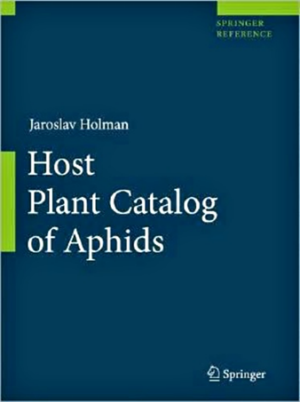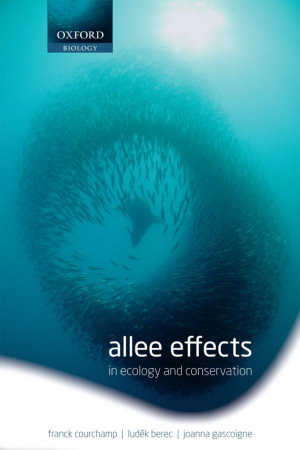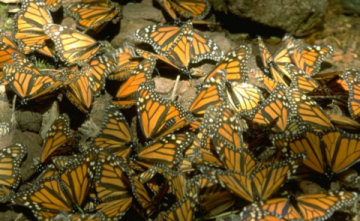|
|
|
Close Help | ||||||||||||||
|
|
|
Close Help | ||||||||||||||

This is a unique synthesis of virtually all available information on aphid host plants, documenting 77,831 trophic relationships between aphid and plant species in a particular geographic area. These interactions involve 3,654 aphid and 11,793 plant species. This study thus includes two thirds of all known aphid species and as such represents a fundamental work for further analysis of ecology and evolution of aphis-plant interactions. It is also a valuable source for agricultural and forestry practicioners.
Holman, J.:
Host Plant Catalog of Aphids. Palaearctic Region.
Springer Verlag, New York, 2009. 1216 pp. ISBN 978-1-4020-8285-6

Metamorphosis of holometabolous insects such as beetles or butterflies is a marked change of form between juvenile (larva, pupa) and adult stages. This transformation enables the larva to efficiently utilize food sources and the flying adult to spread the species. Knowledge of metamorphosis is not only necessary for general understanding of development, but also for effective control of insect pests. The entry into metamorphosis depends on steroid hormones, ecdysteroids, which promote the morphogenetic changes, and on the antagonistically acting juvenile hormone (JH) that delays metamorphosis until a larva attains the appropriate size and developmental stage; premature metamorphosis is usually fatal for insects. That JH prevents metamorphosis has been known for over 70 years since the work of V. B. Wigglesworth. However, the mechanism of JH action has remained an enigma as neither the mode of the JH signal transduction nor the JH receptor are known. By using the red flour beetle Tribolium castaneum, we showed that JH blocks metamorphosis through Methoprene-tolerant (Met), a gene originally uncovered as a mutation conferring resistance to JH in the fly Drosophila. Loss of Met function renders Tribolium insensitive to JH but, unlike in Drosophila, it also causes the beetle larvae to metamorphose prematurely. We further discovered that in response to JH, Met controls metamorphosis by regulating expression of the Broad-Complex gene, which is required for the transition between larval, pupal and adult stages. Our latest studies (Konopova & Jindra 2007, 2008) thus for the first time demonstrate the key role of Met in the regulation of insect metamorphosis by JH and support the disputed function of Met as a receptor or transducer of the JH signal.
Konopova, B. and Jindra, M.:
Juvenile hormone resistance gene Methoprene-tolerant controls entry into metamorphosis in the beetle Tribolium castaneum.
Proc. Natl. Acad. Sci. USA 104, 10488-10493 (2007)
Konopova, B. and Jindra, M.:
Broad-Complex acts downstream of Met in juvenile hormone signaling to coordinate primitive holometabolan metamorphosis.
Development 135, 559-568 (2008)
Recent advances in understanding insect communities in tropical forests have contributed little to our knowledge of large-scale patterns of insect diversity, because incomplete taxonomic knowledge of many tropical species hinders the mapping of their distribution records. This impedes an understanding of global biodiversity patterns and explains why tropical insects are underrepresented in conservation biology. Our study of approximately 500 species from three herbivorous guilds feeding on foliage (caterpillars, Lepidoptera), wood (ambrosia beetles, Coleoptera) and fruit (fruitflies, Diptera) found a low rate of change in species composition (beta diversity) across 75,000 km² of contiguous lowland rainforest in Papua New Guinea, as most species were widely distributed. For caterpillars feeding on large plant genera, most species fed on multiple host species, so that even locally restricted plant species did not support endemic herbivores. Large plant genera represented a continuously distributed resource easily colonized by moths and butterflies over hundreds of kilometers. Low beta diversity was also documented in groups with differing host specificity (fruitflies and ambrosia beetles), suggesting that dispersal limitation does not have a substantial role in shaping the distribution of insect species in New Guinea lowland rainforests. Similar patterns of low beta diversity can be expected in other tropical lowland rainforests, as they are typically situated in the extensive low basins of major tropical rivers similar to the Sepik–Ramu region of New Guinea studied here.
Novotny, V., Miller, S.E., Hulcr, J., Drew, R.A.I., Basset, Y., Janda, M., Setliff, G.P., Darrow, K., Stewart, A.J.A., Auga, J., Isua, B., Molem, K., Manumbor, M., Tamtiai, E., Mogia, M. and Weiblen, G.D.:
Low beta diversity of herbivorous insects in tropical forests.
Nature 448: 692-695 (2007)
Hulcr, J., Novotny, V., Maurer, B.A. and Cognato, A.I.:
Low beta diversity of ambrosia beetles (Coleoptera: Curculionidae: Scolytinae and Platypodinae) in lowland rainforests of Papua New Guinea.
Oikos 117: 214-222 (2008)


Nobody is perhaps surprised that the larger a plant and animal population is the stronger is competition of its members for common resources and the less each of them gains. However, in small or sparse populations where competition is weak just the opposite phenomenon can take a lead - organisms profit from presence of their conspecifics. The reasons for this may include the need to find mates, avoid predators or modify unfavorable (e.g. toxic) environment. This phenomenon has been termed the Allee effect, after the U.S. ecologist W. C. Allee (Courchamp et al. 2008). If this effect, or the need for conspecifics, is strong enough, it can give rise to a critical population size necessary for the entire population to survive: if its size falls below that value, the population will most likely die out. Knowledge of the existence and value of such a critical population size is therefore inevitable for a proper population management, including pest control, conservation of endangered species, and exploitation of economically important plants and animals. Actually, much of what we know about Allee effects and their implications comes from mathematical models. The study by Berec et al. (2007) not only reviews populations for which we have evidence of a simultaneous operation of two or more mechanisms underlying Allee effects (multiple Allee effects), but primarily shows, by means of a mathematical model, that their interaction can take various forms. For example, even if none of two present mechanisms gives rise to a critical population size when alone, their interaction can lead to a critical size. On the contrary, if both mechanisms give rise to a critical population size when alone, their interaction does so, too, yet the resulting critical size can be much larger than any of the single ones. This implies that due to such interactions, failing to take all present Allee effect mechanisms into account could have adverse consequences for the management of threatened or exploited populations, and make the pest management needlessly costly.
Berec, L., Angulo, E., Courchamp, F.:
Multiple Allee effects and population management.
Trends in Ecology & Evolution 22, 185-191 (2007)
Courchamp, F., Berec, L., Gascoigne, J.:
Allee effects in ecology and conservation.
Oxford University Press (2008)

In their spectacular annual fall migration from North America to the overwintering sites in Mexico, monarch butterflies (Danaus plexippus) use the angle of plane of polarized light together with time compensated sun compass for navigation. In collaboration with the laboratory of Prof. Reppert, we have identified photoreceptors in the monarch eyes specialized for detection of polarized light in the UV spectrum. Furthermore we have discovered and characterized a molecular neural wiring connecting circadian biological clock with the signal pathway of polarized light entering the brain of the migratory butterfly. Due to the constant movement of the sun during the day, information from the circadian clock is critical for maintaining the constant direction of the butterflies' migration, often exceeding thousands of miles. The monarch butterfly represents the first organism where such unique molecular neural pathway was identified. The results of this research were reported in several international journals including the prestigious American journals "The Scientist" and "Science".
Sauman, I., Briscoe, A., Zhu, H., Shi, D., Froy, O., Stalleicken, J., Yuan, Q., Casselman, A. and Reppert, S.M.:
Connecting the navigational clock to sun compass input in monarch butterfly brain.
Neuron 46, 457-467 (2005)
Zhu, H., Sauman, I., Yuan, Q., Casselman, A., Emery-Le, M., Emery, P. and Reppert, S.M.:
Cryptochromes define a novel circadian clock mechanism in monarch butterflies that may underlie sun compass navigation.
PLoS Biol. 6, e4 (2008)

 |
Biology Centre of the Academy of Sciences of the Czech Republic, v. v. i. |